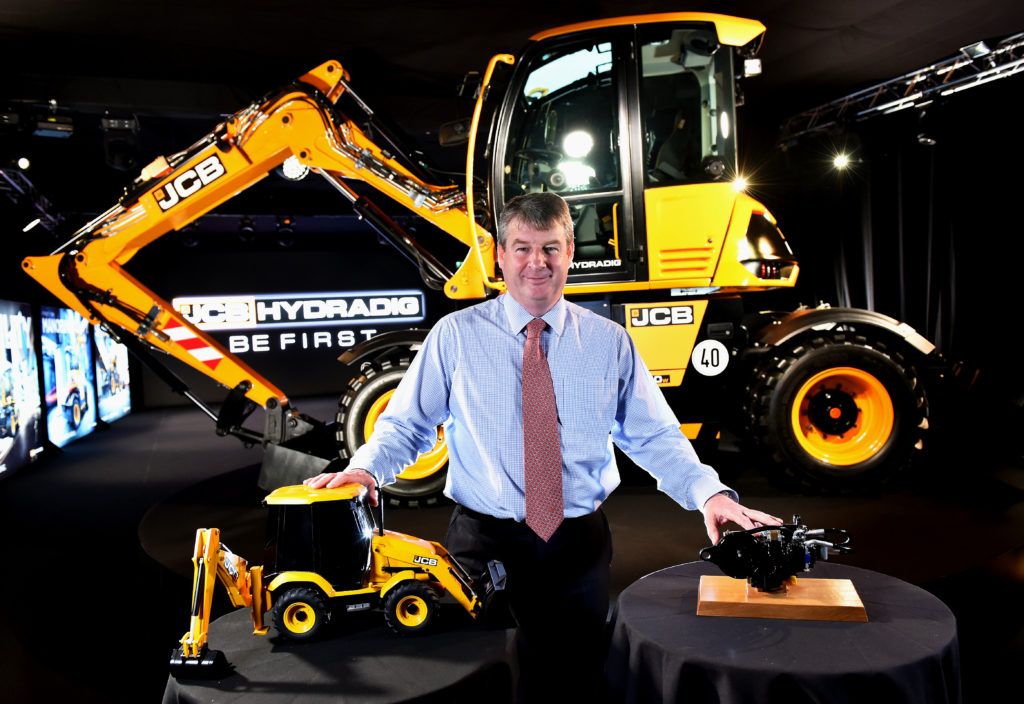The advances in technology and alternative fuels have presented both challenges and opportunities for commercial and industrial vehicle brands seeking better ways to showcase new products and support services that not only drive revenue, but also engage audiences in a world that has evolved during the pandemic.
Daniel Owen, CEO of The Armstrong Partnership which works with leading commercial and industrial vehicle brands, shares his key considerations for manufacturers exploring ways to enhance product marketing for their current portfolio as well as those working with the latest technologies to bring the vehicles and machinery of the future to market.
**
The benefits of alternative fuels
More and more we’re seeing new trials and adoption of alternative fuels for commercial and industrial vehicles, in particular improvements in battery technology for larger vehicles to increase range as well as hydrogen powered engines. To stand out, original equipment manufacturers (OEMs) need to visualise and communicate the technology that’s going to be used to power vehicles in compelling ways. They need to sell the features and benefits clearly to convince fleet owners and municipalities to adopt their technology over other brands competing in the same space.
Challenger brands
For decades, commercial and industrial vehicle sectors have been dominated by long-standing manufacturers – now we’re seeing emerging challenger brands starting to disrupt the marketplace. Take Arrival, for example, and its concepts for new electric vehicles – which has historically been a stable sector for OEMs. As alternative fuels and associated technologies continue to gather pace – we’ll see more challenger brands emerge, and manufacturers must be prepared for new players and more radical approaches to brand and product marketing.
Isolate unique technology
Leading automotive brands like Audi have built enviable customer loyalty by drawing attention to certain technologies within vehicles to differentiate a product within the category, rather than just selling the overall machine. This makes the buyer feel like they’re getting more for their money and supports the price point. Commercial vehicle and industrial manufacturers should take inspiration here – instead of trying to compete machine-to-machine with other brands, focus on highlighting the specifics of your technology – giving each element its own identity. This will help to highlight unique features, engage customers and successfully differentiate your brand in the market.
Simplicity is key
We often see overcomplicated model and variation labelling on commercial and industrial vehicles – it does nothing but confuse customers. Developing a simple model and variation labelling system makes it easier for customers to understand the hierarchy within your product portfolio. When it comes to selling variations, group these into packs or bolt-ons, for example a comfort pack – offering upgrades to seats, suspension and so on. This is a much simpler way of being able to upsell a group of variations rather than labelling each one individually, which makes specifying a new machine complex and can often lead to an under-specified final product. We also recommend demonstrating each optional extra with a concise animation to explain the function and benefit – making the decision to up-spec far easier for the buyer.
Own your space
Whether it’s clean energy, comfort, automation or digitalisation of machinery – think about how your products feed the bigger idea and how your brand can take ownership of this space. This doesn’t mean simply focussing on machine capabilities, but how your brand lives and breathes this brand purpose so that your customers won’t think twice about the manufacturer that excels in a particular space.
Create an emotional connection
Commercial and industrial vehicle marketing can be very technical and function-driven, but brands still need to create an emotional connection with their audience, especially when it comes to growing market share. This is where an experienced creative partner should be able to work with you to convey all the technical highlights of a product or machine while also engaging audiences on an emotional level – exactly how we feel as consumers. This emotional connection needs to resonate with everyone – from the buyers to the operators of the vehicles to build unshakeable loyalty in a busy marketplace.
Aesthetic is everything
We’re seeing manufacturers of vehicles, from tractors to road sweepers, elevate their whole brand appearance to produce very dynamic looking vehicles that are really captivating. Just because you’re selling a functional piece of equipment doesn’t mean the design aesthetic of the overall vehicle shouldn’t look brilliant. Again, this is something we are going to see more of – particularly with the emerging brands that are looking to steal attention with slick, on-point design and presentation of their equipment.
Make life simple for dealers
OEMs that sell through a network of dealers must ensure a steady flow of marketing material that can be dual-branded and deployed easily. Often, this is the part that slips between the cracks – where dealers expect manufacturers to be marketing new products and vice versa.
The dealer that should be responsible for selling the vehicle and championing the brand, but manufacturers need to support them by producing marketing collateral centrally that can be adapted and deployed in-market. We encourage regular meetings to engage and forward plan with your dealers. This can include hosting webinars to communicate new products coming to market, how the product or service will be supported, and with what assets. These assets can be distributed throughout the dealer network along with a concise campaign overview, timeline and objectives. We call it a ‘campaign in a box’ and it covers everything from email and social content to video, animation and direct mailers. It’s a cost-effective way for manufacturers to nourish their dealer network with compelling marketing assets that can be localised, while maintaining consistency of the brand image and messaging in the market.
The Armstrong Partnership





